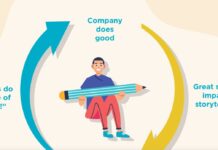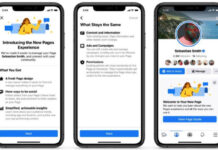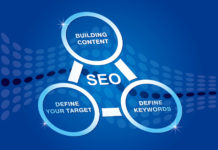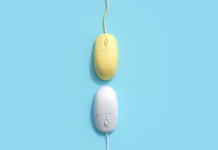Are you planning to redesign your company’s website?
Is your boss (or her boss) worried the website’s looking a little old and dated? Maybe they’re not happy with its performance and want a redesign to recharge sales?
In that case, I’m glad you found this blog post before you started.
Because I want to show you why the traditional website redesign process is a dangerous trap that can cause you pain and lost revenue. After that, I’m going to show you how to avoid this trap, and guarantee your success in your next redesign.
And let’s be clear: When I say success, I don’t mean a pat on your back from your boss, or kudos from the design community. If your website’s main mission is to sell something or help sell something – that is, to ultimately produce revenue – I’m going to show you how to guarantee your website redesign leads directly to an increase in revenue.
The secret? Never redesign your website again – or at least, never “redesign” in the traditional sense of the word.
The Invisible Risks of Redesigning Your Website
You see, wholesale website redesigns are dangerous things. When new sites launch, they look new, fresh, and modern. They have all the newest features and badges and social media options. They almost always look better and so – people assume – they are better.
But the reality of website redesigns is that they are very risky propositions. That’s because the redesign process used by most marketing departments – or their agencies – doesn’t deal with risk mitigation.
To understand the risks, think about how many individual changes are made during a redesign: Layout changes to the site-wide templates, copy changes, design and typography, the flow of pages through a checkout, etc. During a full redesign, very often the only thing that stays the same is the company logo and banding elements.
The problem is, everyone gets so excited about the new, they rarely sit down to discuss the risk of making all these changes, and how they impact the site’s all-important conversion rates. Maybe some of those changes help boost the conversion rate, but it’s just as likely that others will hurt your sales or sign-up rates.
How do you know which have positive or negative effect?
As you can see above, website redesign masks the effects of many changes.
If you make design changes without testing their effect on your key metrics, you could be in for a nasty surprise. Maybe your new home page headline increases conversions, but the new call-to-action buttons hurt conversions. If you don’t track the effect of each major change individually, you have no way of knowing which changes are helping and which are hurting.
Many marketers go into a redesign expecting that the new design alone will boost their conversion rates. But redesigns more often hurt conversion rates. If you don’t actively set out to manage the risk – by continuously testing key changes – you could lose a lot of money.
Mitigating the risk of a redesign can only be accomplished with rigorous conversion rate optimization testing of each of the main changes. You need a strategy that includes understanding your buyer personas, prioritizing test hypotheses to fix conversion-killers, setting up controlled split tests (or A/B tests), and then analyzing the data to get new insight and make informed changes.
A Better Approach: Evolutionary Site Redesign
If you want a new, better looking, and more profitable website, there’s a way to redesign while slashing the risk to zero. This approach to website redesign is something I call “Evolutionary Site Redesign” or ESR.
ESR essentially uses A/B testing principles to redesign your site to work better, not just look better. Rather than relying on the gut-feeling and potentially flawed intuition of an art director, your website decisions should be made against the crucible of customer actions. Once you’ve defined your website’s goals clearly, you can test and continuously optimize to improve on them. This is a continuous process – since various elements of the site are constantly being tested and improved, your site will never get stale.
Let’s say you’re courting design-savvy customers, so you want your website to look new and current. And if conversion rate is a key business driver, you should be continuously updating your design by testing the major site-wide elements that combine to create your site’s look and feel.
Elements like header, navigation, persistent calls-to-action, headlines, fonts, etc. can all be tested to ensure that any design changes contribute to a rise in the all-important conversion rate. By testing the major design-defining elements across the website, you can then evolve your design based on how people respond in the way that matters most – revenue-driving actions.
Take Amazon as an example. When was the last time they redesigned their website?
Having trouble remembering? It’s because they never redesign in the traditional sense. Instead, they’re constantly redesigning through ongoing A/B testing. It’s no fluke that they’re cutting a wide swath through so many markets.
And, you can do the same thing with your website.
Evolutionary Site Redesign (ESR) Best Practices
Here are a few best practices for getting the most out of Evolutionary Site Redesign:
1. Align Website Objectives to Business Goals
Start by defining your business goals and how your website supports them. If you’re making changes to any part of your design, test the effect of the changes on the core objectives.
I like to think of it as a goals waterfall. Business goals should determine website goals, which in turn determine conversion goals. Conversion goals should determine which variations of design elements get adopted.
Be careful about testing metrics that don’t directly contribute to your business goals, like bounce rate. A design change could easily reduce the bounce rate of a page while actually harming sales. You aren’t in business to reduce bounce rates, you’re in the business to make sales or generate leads.
2. Generate Great Hypotheses
As you probably remember from high school science, experiments always start with a great hypothesis. Website experiments are no different.
If you are considering redesigning the look of your navigation, for example, what’s the goal of the redesign? Are you assuming that by reorganizing the main pages in the navigation, users will find what they are looking for more easily? If so, what metric are you using to define success?
At the very least, do no harm. Often, design changes are dictated by other needs, like branding, making a site consistent with other company properties, etc. In these cases, when change needs to be made, check to make sure a design element you want to change doesn’t harm the existing conversion rate.
But if you are forced to make a change, always look for opportunities to boost your conversion rate. Even a single percentage gain – when repeated a few times in different areas – can add up to significant incremental revenue growth,
As you are testing, always keep your hypotheses in mind. You’re not trying to figure out which variation will win – you’re trying to answer a specific question.
In other words, don’t run a test to tell if random image A will out-perform random image B. Instead, set up your test to answer the bigger question, such as: Do product pictures on category pages outperform lifestyle images? Do your customers respond to better to a different aspect of your value proposition?
3. Execute a Cycle of Continuous Improvement
Getting the full value of Evolutionary Site Redesign requires a commitment to ongoing testing. A single A/B or multivariate test does not make a conversion optimization strategy. Research shows that the greatest contributor to optimization success is repeated, structured testing. The bonus? The more often you test, the better your site will perform, and the fresher it will look!
4. Analyze Results for Insights
There’s more potential in Evolutionary Site Redesign than just conversion rate lift. A winning A/B test result is often just the beginning of the test’s value. There’s much more to gain from a smart analysis of the results. By learning how your users react to a specific design element, your designers may unlock new approaches that you can test to get even better results.
By adopting a continuous improvement approach to drive the Evolutionary Site Redesign process, you ensure that website test iterations – and your redesign process – are driven by solving customer problems rather than just creative aesthetics.
The Top 5 Benefits of Adopting ESR
In summary, here are the five biggest benefits of this “un-redesign” method:
- You get a new site “look and feel” and conversion rate lift at the same time
- You learn which elements actually improve results
- You maintain your team’s focus on the important business metrics rather than “aesthetic” redesign
- Your website never faces lags in results in-between redesigns
- You avoid the risks of a traditional site redesign
Great design can play a huge role in increasing clarity, communicating value, and boosting conversion rates. However, design needs to be judged by how well it performs. Otherwise, what’s the point of design? So, the next time your team is considering a website redesign, chime in with a suggestion: “Let’s test that first.”









































